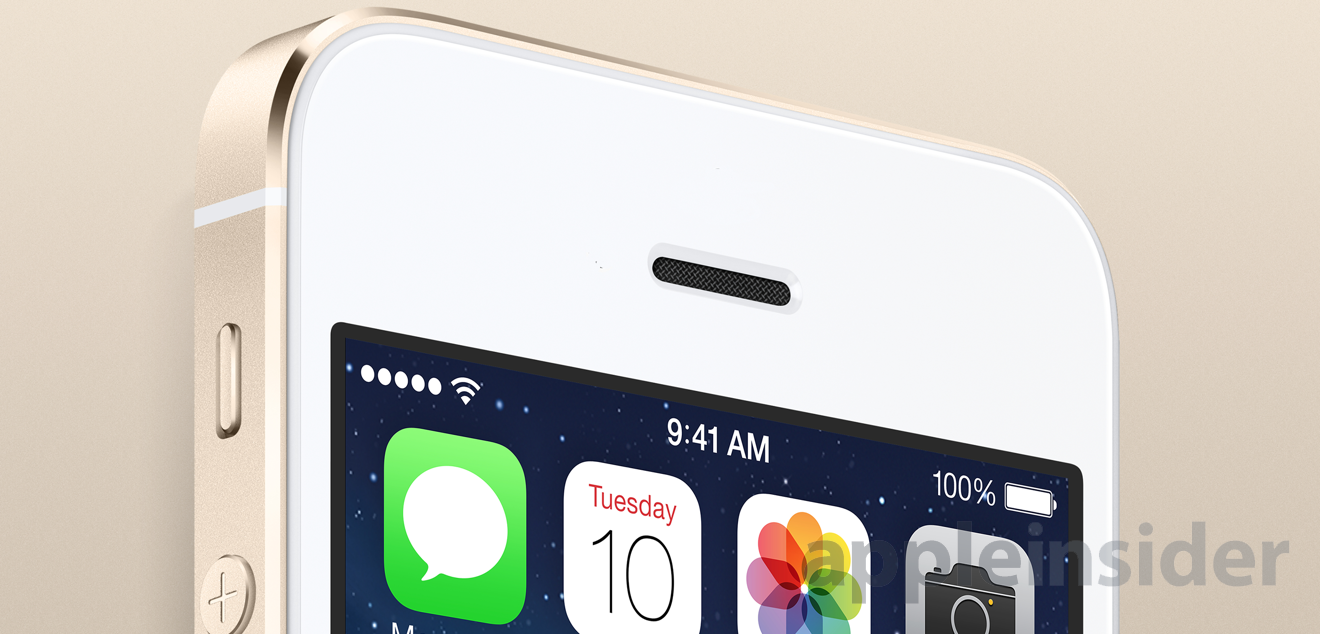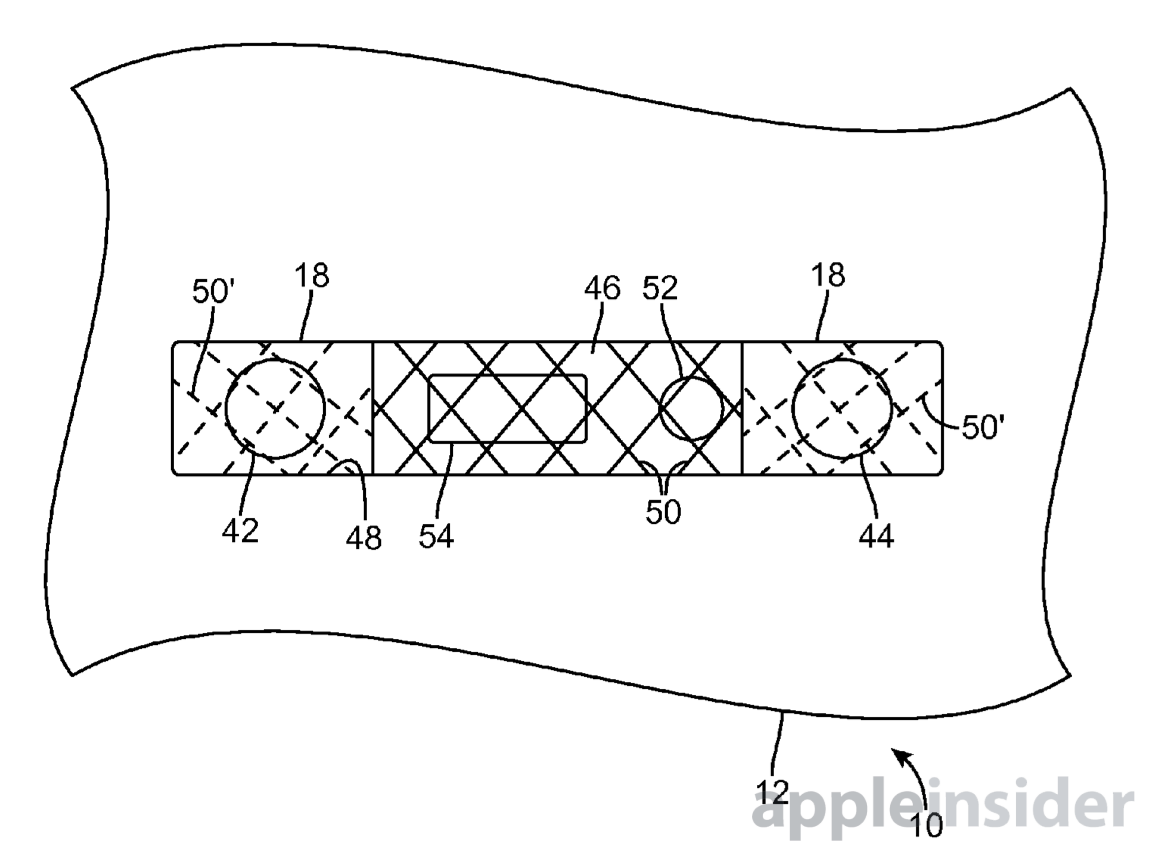The clean and simple design of Apple's iconic iPhone could become even simpler, thanks to a new concept that describes concealing the FaceTime camera within the earpiece speaker slot, and even adding a camera flash module that would illuminate forward facing pictures.
The idea was presented in a newly published patent application discovered on Thursday by AppleInsider, entitled "Electronic Device with Camera Flash Structures." The proposed invention describes a camera and accompanying flash that could be hidden under the speaker port mesh found on a portable device like the iPhone.
Currently, the camera and ambient light sensor for the iPhone are located to the top and left, respectively, of the speaker hole on the iPhone. And there is also no camera flash for the FaceTime lens to illuminate "selfies" and other forward facing shots.
While the spaces for the camera and light sensor can be seen at certain angles on the black front-glass panel of the iPhone 5s, these spaces are readily apparent on the white glass that is found on the white and gold versions of the handset. These black "dots" stand out on what is otherwise a clean and simple appearance.
As detailed in the new patent filing, Apple has experimented with addressing this by placing the camera inside the speaker hole found atop the front of the iPhone. In the application, Apple states that the lens, along with a camera flash, could be located under the speaker port mesh, making them essentially invisible to users and providing a cleaner design.
Apple even notes that the addition of a camera flash to the front of the iPhone could be beneficial for more than photos. In the filing, the company says that adding a small light to the speaker slot could serve as a "status indicator," notifying users when a message has been received.
In the filing, Apple notes that if camera components are "poorly mounted" within a portable device, the result can "detract from an otherwise aesthetically appealing device appearance." It describes its concept as a potential improvement that could make its way into future products.
The proposed invention, made public this week by the U.S. Patent and Trademark Office, was first filed by Apple in February of 2013. It is credited to inventors Lee E. Hooton and Kelvin Kwong.
 Neil Hughes
Neil Hughes








-m.jpg)






 Marko Zivkovic
Marko Zivkovic
 Christine McKee
Christine McKee
 Andrew Orr
Andrew Orr
 Andrew O'Hara
Andrew O'Hara
 William Gallagher
William Gallagher

 Mike Wuerthele
Mike Wuerthele
 Bon Adamson
Bon Adamson



-m.jpg)



67 Comments
Apple even notes that the addition of a camera flash to the front of the iPhone could be beneficial for more than photos. In the filing, the company says that adding a small light to the speaker slot could serve as a "status indicator," notifying users when a message has been received.
I'm assuming that they'd not have the grille obscure the area immediately in front of the camera lens (and probably also the flash if that interfered with even light diffusion).
Yes lets patent that idea, because NOBODY has ever thought of such a thing before. And people wonder what's wrong with the current patent system. Frankly I'm stunned AI could get seven paragraphs out of this "story". Didn't there used to be a back-page area in AI to keep stuff like this off the main news flow?
The only thing this camera will take a photo of is the sky since everyone has been programmed to look at the screen to take photos (or guess when taking selfies). This has to be for something else because it doesn't make any sense.
I looked through the patent and it's very extensive, even mentioning hiding the lens and flash behind an LCD window (like the fancy window shades). I think this patent is for something totally different than what we've seen from Apple and might actually be for something like an arm device (ok and iWatch). The design talks about an embodiment that could be a cellular phone but also an "other device." (Ref: Page 1, paragraph 0002, found after figures) Just because it shows something that looks like an iPhone doesn't mean that's the only embodiment it could go into.